F-86 Sabre
| F-86 Sabre | |
|---|---|
|
|
|
| A North American F-86 during the Oshkosh Air Show | |
| Role | Fighter aircraft |
| National origin | United States |
| Manufacturer | North American Aviation |
| First flight | 1 October 1947 |
| Introduced | 1949, USAF |
| Retired | 1994, Bolivia |
| Primary users | United States Air Force Japanese Air Self-Defense Force Spanish Air Force Republic of Korea Air Force |
| Number built | 9,860 |
| Unit cost | US$219,457 (F-86E)[1] |
| Developed from | FJ-1 Fury |
| Variants | F-86D Sabre Canadair Sabre CAC Sabre FJ-2/3/4 Fury North American YF-93 |
The North American Aviation F-86 Sabre (sometimes called the Sabrejet) was a transonic jet fighter aircraft. The Sabre is best known for its Korean War role where it was pitted against the Soviet MiG-15 and obtained UN air superiority. Although developed in the late 1940s and outdated by the end of the 1950s, the Sabre proved adaptable and continued as a front line fighter in air forces until the last active front line examples were retired by the Bolivian Air Force in 1994.
Its success led to an extended production run of over 7,800 aircraft between 1949 and 1956, in the United States, Japan and Italy. It was by far the most-produced Western jet fighter, with total production of all variants at 9,860 units.
Variants were built in Canada and Australia. The Canadair Sabre added another 1,815 airframes, and the significantly re-designed CAC Sabre (sometimes known as the Avon Sabre or CAC CA-27), had a production run of 112.
Contents |
Design and development
Initial proposals to meet a USAAF requirement for a single-seat high-altitude day fighter aircraft/escort fighter/fighter bomber were made in late 1944, and were originally to be derived from the design of the straight wing FJ-1 Fury being developed for the U.S. Navy.[2] The North American P-86 Sabre was the first American aircraft to take advantage of flight research data seized from the German aerodynamicists at the end of the war. [3] Performance requirements were met by incorporating a 35 degree swept-back wing with automatic slats into the design, using the Me 262 wing profile, Messerschmitt wing A layout and adjustable stabilizer. [4][5] Manufacturing was not begun until after World War II as a result. The XP-86 prototype, which would become the F-86 Sabre, first flew on 1 October 1947[6] from Muroc Dry Lake, California.[7]
The USAF Strategic Air Command had F-86 Sabres in service from 1949 through 1950. The F-86s were assigned to the 22nd Bomb Wing, the 1st Fighter Wing and the 1st Fighter Interceptor Wing.[8]
The F-86 was produced as both a fighter-interceptor and fighter-bomber. Several variants were introduced over its production life, with improvements and different armament implemented (see below). The XP-86 (eXperimental Pursuit) was fitted with a J35-C-3 jet engine that produced 4,000 lbf (18 kN) of thrust. This engine was built by GM's Chevrolet division until production was turned over to Allison.[9] The J47-GE-7 engine was used in the F-86A-1 producing a thrust of 5,200 lbf (23 kN) while the General Electric J73-GE-3 engine of the F-86H produced 9,250 lbf of thrust.[10] The F-86 was the primary U.S. air combat fighter during the Korean War, with significant numbers of the first three production models seeing combat.
The fighter-bomber version (F-86H) could carry up to 2,000 pounds (900 kg) of bombs, including an external fuel-type tank that could carry napalm.[11]
Both the interceptor and fighter versions carried six .50-inch (12.7 mm) AN/M3 Browning machine guns with electrically-boosted feed in the nose (later versions of the F-86H carried four 20 mm cannons instead of machine guns). Firing at a rate of 1,200 rounds per minute each, the .50-caliber guns were harmonized to converge at 1,000 ft (300 m) in front of the aircraft, using armor-piercing (AP) and armor-piercing incendiary (API) rounds, with one armor-piercing incendiary tracer (APIT) for every five AP or API rounds. The API rounds used during the Korean War contained magnesium, which were designed to ignite upon impact but burned poorly above 35,000 ft (11,000 m) as oxygen levels were insufficient to sustain combustion at that height. Initially fitted with the Mark 18 manual-ranging computing gun sight, later models used A-1CM radar ranging gunsight which used radar to compute the range of a target. This would later to prove a significant advantage against MiG opponents over Korea, and fitted to later supersonic fighters such as the F-100 and F-105.
Unguided 2.75 inch (70 mm) rockets were used on some of the fighters in target practice, but 5 inch (127 mm) rockets were later used in combat operations. The F-86 could also be fitted with a pair of external jettisonable fuel tanks (four on the F-86F beginning in 1953) that extended the range of the aircraft.
The F-86 Sabre was also license produced by Canadair Limited in Montreal as the Canadair Sabre. The final variant of the Canadian Sabres, the Mk 6, is generally rated as being one of the most capable of all Sabre variants built anywhere.[12] The last Sabre to be manufactured by Canadair Ltd. (Sabre #1815) now resides at the Western Canada Aviation Museum (WCAM)'s permanent collection in Winnipeg, Canada after being donated by the Pakistan Air Force.[13]
Breaking sound barrier and other records

The F-86A set its first official world speed record of 570 mph (920 km/h) in September 1948.[14]
Several people involved with the development of the F-86, including the chief aerodynamicist for the project and one of its other test pilots, claimed that North American test pilot George Welch had broken the sound barrier in a dive with the XP-86 while on a test flight 1 October 1947.[15] (Chuck Yeager went supersonic on 14 October 1947 in the rocket powered Bell X-1, the first aircraft to sustain supersonic speeds in level flight, making it the first "true" supersonic aircraft.)[16]
On 18 May 1953, Jacqueline Cochran flying a Canadian-built F-86E alongside Chuck Yeager, became the first woman to break the sound barrier.[1]
Operational history
Korean War
The F-86 entered service with the United States Air Force in 1949, joining the 1st Fighter Wing's 94th Fighter Squadron "Hat-in-the-Ring" and became the primary air-to-air jet fighter used in the Korean War. With the introduction of the Soviet Mikoyan-Gurevich MiG-15 into air combat in November 1950, which out-performed all aircraft then assigned to the United Nations, three squadrons of F-86s were rushed to the Far East in December.[17] The F-86 could out-turn and out-dive the MiG-15, but the MiG-15 was superior to the F-86 in ceiling, acceleration, rate of climb, and zoom (especially until the introduction of the F-86F in 1953); MiGs flown from bases in Manchuria by Chinese, Korean, and Soviet VVS pilots, were pitted against two squadrons of the 4th Fighter-Interceptor Wing forward-based at K-14, Kimpo, Korea.[17]
Many of the American pilots were experienced World War II veterans while the North Koreans and the Chinese lacked combat experience, thus accounting for much of the F-86's success.[18] However, whatever the actual results may be, it is clear that the F-86 pilots did not have as much success over the better trained Soviet piloted MiG-15s. Although Soviets piloted the majority of MiG-15s that fought in Korea, North Korean and Chinese pilots increased their activity as the war went on.[19][20] The Soviets and their allies periodically contested air superiority in MiG Alley, an area near the mouth of the Yalu River (the boundary between Korea and China) over which the most intense air-to-air combat took place. The F-86E's all-moving tailplane has been credited with giving the Sabre an important advantage over the MiG-15. Far greater emphasis has been given to the training, aggressiveness and experience of the F-86 pilots.[18] Despite rules-of-engagement to the contrary, F-86 units frequently initiated combat over MiG bases in the Manchurian "sanctuary."[19]
The needs of combat operation balanced against the need to maintain an adequate force structure in Western Europe led to the conversion of the 51st Fighter-Interceptor Wing from the F-80 to the F-86 in December 1951. Two fighter-bomber wings, the 8th and 18th, converted to the F-86F in the spring of 1953.[21] No. 2 Squadron, South African Air Force also distinguished itself flying F-86s in Korea as part of the 18 FBW.[22]
By the end of hostilities, F-86 pilots were credited with shooting down 792 MiGs for a loss of only 78 Sabres, a victory ratio of 10 to 1.[23] Postwar totals officially credited by the USAF are 379 kills for 103 Sabres lost,[24] amounting to a ratio of nearly 4 to 1. Modern research by Dorr, Lake and Thompson has claimed the actual ratio is closer to 2 to 1.[25]
The Soviet claims of downing over 600 Sabres[26] together with the Chinese claims[27] are considered exaggerated by the USAF.. Recent USAF records show that 224 F-86s were lost to all causes, including non-combat losses. But direct comparison of Sabre and MiG losses seem irrelevant, since primary targets for MiGs were heavy B-29 bombers and ground-attack aircraft, while the primary targets for Sabres were MiG-15s.
A recent RAND report[28] made reference to "recent scholarship" of F-86 vs. MiG-15 combat over Korea and concluded that the actual kill:loss ratio for the F-86 was 1.8:1 overall, and likely 1.3:1 against MiGs flown by Soviet pilots; however, the report has been under fire for various misrepresentations.[29]
Of the 40 American pilots who earned the designation of ace during the Korean war, all but one flew the F-86 Sabre. (The other was a Navy F4U Corsair night fighter pilot.)
1958 Taiwan Strait Crisis
The Republic of China Air Force of Taiwan was one of the first recipients of surplus USAF Sabres. From December 1954 to June 1956, the ROC Air Force received 160 ex-USAF F-86F-1-NA through F-86F-30-NA fighters. By June 1958, the Nationalist Chinese had built up an impressive fighter force, with 320 F-86Fs and seven RF-86Fs having been delivered.
Sabres and MiGs were shortly to battle each other in the skies of Asia once again in the Second Taiwan Strait Crisis. In August 1958, the Chinese Communists of the People's Republic of China attempted to force the Nationalists off of the islands of Quemoy and Matsu by shelling and blockade. Nationalist F-86Fs flying CAP over the islands found themselves confronted by Communist MiG-15s and MiG-17s, and there were numerous dogfights.
During these battles, the Nationalist Sabres introduced a new element into aerial warfare — under a secret effort designated Operation Black Magic, the US Navy had provided the ROC with the AIM-9 Sidewinder, its first infrared-homing air-to-air missile, which was just entering service with the United States. A small team from VMF-323, a Marine FJ-4 Fury squadron with later assistance from China Lake and North American initially modified 20 of the F-86 Sabres to carry a pair of Sidewinders on underwing launch rails and instructed the ROC pilots in their use flying profiles with USAF F-100s simulating the MiG-17. The MiGs enjoyed an altitude advantage over the Sabres as they had in Korea and Communist Chinese MiGs routinely cruised over the Nationalist Sabres, only engaging when they had a favorable position. The Sidewinder took away that advantage and proved to be devastatingly effective against the MiGs.[30]
The combat introduction of the Sidewinder took place in a battle on 24 September 1958 when ROC Sabres succeeded in destroying 10 MiGs and scoring two probables without loss to themselves. In one month of air battles over Quemoy and Matsu, Nationalist pilots tallied a score of no less than 29 MiGs destroyed and eight probables, against a loss of two F-84Gs and no Sabres.
Indo-Pakistani War of 1965

The F-86 entered service with the Pakistan Air Force (PAF) in 1954 with the first batch of 120 aircraft. Most of the aircraft were of the F-86F-40 configuration except for a few F-86F-35s. The F-86 was operated by nine PAF squadrons at various times. During the Indo-Pakistan war of 1965 the F-86 became the mainstay of the PAF and provided a qualitative edge against a larger Indian Air Force (IAF).[31]
In the air-to-air combat of the Indo-Pakistani War of 1965, the PAF Sabres claimed to have shot down 15 IAF aircraft, comprising of nine Hunters, four Vampires and two Gnats.[32] India however, admitted a loss of 14 combat aircraft to the PAF's F-86s.[33] The F-86s of the PAF had the advantage of being armed with AIM-9B/GAR-8 Sidewinder missiles whereas none of its Indian adversaries had this capability. Despite this, the IAF claimed to have shot down 13 PAF Sabres in air-to-air combat.[34] This claim is disputed by the PAF who admit to having lost 13 F-86s Sabres during the whole 23 days but only seven of them during air-to-air battles.[32]
The PAF Sabres performed well in ground attack with claims of destroying around 36 aircraft on the ground at Indian airfields at Halwara, Kalaikunda, Baghdogra, Srinagar and Pathankot.[32][35][36][37] India only acknowledges 22 aircraft lost on the ground to strikes partly attributed to the PAF's F-86s and its bomber B-57 Canberra.[33]
Pakistani F-86s were also used against advancing columns of the Indian army when No. 19 Squadron Sabres engaged the Indian Army using five inch (127 mm) rockets along with their six Browning M3 .50 in (12.7 mm) caliber machine guns. According to Pakistan reports, Indian armor bore the brunt of this particular attack at Wagah.[38] The Number 14 PAF Squadron earned the nickname "Tailchoppers" in PAF for their F-86 operations and actions during the 1965 war.[39]
During the war, United States barred the sales of the F-86 to Pakistan. Nonetheless, Pakistan maintained its F-86 fleet through sales of around 90 Iranian Sabres and Sabre Mk 6 CL-13s (Canadian-made F-86 Sabres) which formed the backbone of the operations during the Bangladesh Liberation War, 1971. Despite its formidable performance, the F-86 proved vulnerable to the diminutive Folland Gnat, which proved to be fast, nimble and hard to see. The IAF Gnats, given the nickname "Sabre Slayer," claimed to have downed seven PAF Sabres.[34][40][32]
Pakistan Air Force F-86 Flying Ace Sqn Ldr Muhammad Mahmood Alam, officially credited with five kills in air-to-air combat,[41] three of them in less than a minute.[42]
Bangladesh Liberation War 1971
The Canadair Sabres (Mark 6) acquired from ex-Luftwaffe stocks via Iran, were the mainstay of the PAF's day fighter operations during the Bangladesh Liberation War 1971, and had the challenge of dealing with the threat from IAF. Despite having acquired newer fighter types such as the Mirage III and the Shenyang F-6, the Sabre Mark 6 (widely regarded as the best "dog-fighter" of its era[43]) along with the older PAF F-86Fs, were tasked with the majority of operations during the war, due to the small numbers of the Mirages and combat unreadiness of the Shenyang F-6.[13] In East Pakistan only one PAF F-86 squadron (14th Squadron) was deployed to face the formidable IAF Soviet MiG-21s and the Sukhoi SU-7 and the numerical superiority of the IAF. At the beginning of the war, PAF had eight squadrons of F-86 Sabres.[44]
Despite these challenges, the PAF F-86s performed well with Pakistani claims of downing 31 Indian aircraft in air-to-air combat including 17 Hawker Hunters, eight Sukhoi SU 7 "Fitters", one MiG 21s and three Gnats[45] while losing seven F-86s.[46] India however claims to have shot down 11 PAF Sabres for the loss of 11 combat aircraft to the PAF F-86s.[47] The IAF numerical superiority overwhelmed the sole East Pakistan Sabres squadron (and other military aircraft)[48][49] which were either shot down, or grounded by Pakistani Fratricide as they could not hold out, enabling complete Air superiority for the Indian Air Force.[50]
In the Battle of Boyra, the first notable air engagement over East Pakistan, India claimed four Gnats downed three Sabres while Pakistan acknowledges only two Sabres were lost while one Gnat was shot down.[13]. As per official Pakistan accounts, 24 Sabres were lost in the war: 13 due to enemy action and 11 disabled by PAF forces to keep them out of enemy hands,[46] while 28 Sabres were lost per Indian accounts: 17 due to IAF action and 11 disabled by the PAF on the ground to keep them out of enemy hands.[51]. Five of these Sabres, however, were recovered in working condition and flown again by the Bangladesh Air Force.[51][52][53]
After this war, Pakistan slowly phased out its F-86 Sabres and replaced them with Chinese F-6 (Russian MiG-19 based) fighters. The last of the Sabres were withdrawn from service in PAF in 1980.[13] F-86 Sabres nevertheless remain a legend in Pakistan and are seen as a symbol of pride. They are now displayed in Pakistan Air Force Museum and in the cities to which their pilots lived.
Guinea Bissau
Based at AB2-Bissau/Bissalanca in 1961-1964, some F-86Fs were deployed in Guinea in 1961 where they were used in ground attack and close support operations. These aircraft formed “Detachment 52”, equipped with eight F-86Fs (serials: 5307, 5314, 5322, 5326, 5354, 5356, 5361 and 5362) of the Esquadra 51, based at the Base Aerea 5, in Monte Real, Portugal. In August 1962, 5314 overshot the runway during emergency landing with bombs still attached on underwing hardpoints and burned out. F-86 5322 was shot down by enemy ground fire on 31 May 1963; the pilot ejected safely and was recovered. Several other aircraft suffered combat damage, but were repaired.
In 1964, 16 F-86Fs based at Bissalanca returned to mainland due to U.S. pressure. They had flew 577 combat sorties, of which 430 were ground attack and close air support missions. During these operations, one FAP Sabre was shot down and other crashed.
Variants
North American F-86
- XF-86
- three prototypes, originally designated XP-86, North American model NA-140
- YF-86A
- this was the first prototype fitted with a General Electric J47 turbojet engine.

- F-86A
- 554 built, North American model NA-151 (F-86A-1 block and first order of A-5 block) and NA-161 (second F-86A-5 block)
- DF-86A
- A few F-86A conversions as drone directors
- RF-86A
- 11 F-86A conversions with three cameras for reconnaissance
- F-86B
- 188 ordered as upgraded A-model with wider fuselage and larger tires but delivered as F-86A-5, North American model NA-152
- F-86C
- original designation for the YF-93A, two built (S/N 48-317 & 48-318),[54] order for 118 cancelled, North American model NA-157
- YF-86D
- prototype all-weather interceptor originally ordered as YF-95A, two built but designation changed to YF-86D, North American model NA-164
- F-86D
- Production interceptor originally designated F-95A, 2,506 built. See F-86D Sabre.
- F-86E
- Improved flight control system and an "all-flying tail" (This system changed to a full power-operated control with an "artificial feel" built into the aircraft's controls to give the pilot forces on the stick that were still conventional, but light enough for superior combat control. It improved high speed maneuverability); 456 built, North American model NA-170 (F-86E-1 and E-5 blocks), NA-172, essentially the F-86F airframe with the F-86E engine (F-86E-10 and E-15 blocks); 60 of these built by Canadair for USAF (F-86E-6)
- F-86E(M)
- Designation for ex-RAF Sabres diverted to other NATO air forces
- QF-86E
- Designation for surplus RCAF Sabre Mk. Vs modified to target drones
- F-86F
- Uprated engine and larger "6-3" wing without leading edge slats, 2,239 built; North American model NA-172 (F-86F-1 through F-15 blocks), NA-176 (F-86F-20 and -25 blocks), NA-191 (F-86F-30 and -35 blocks), NA-193 (F-86F-26 block), NA-202 (F-86F-35 block), NA-227 (first two orders of F-86F-40 blocks comprising 280 aircraft which reverted to leading edge wing slats of an improved design), NA-231 (70 in third F-40 block order), NA-238 (110 in fourth F-40 block order), and NA-256 (120 in final F-40 block order); 300 additional airframes in this series assembled by Mitsubishi in Japan for Japanese Air Self-Defense Force. Sabre Fs had much improved high speed agility, coupled with a higher landing speed of over 145 mph (233 km/h). The F-35 block had provisions for a new task: the nuclear tactical attack with one of the new small "nukes" ("second generation" nuclear ordnance). The F-40 had a new slatted wing, with a slight decrease of speed, but also a much better agility at high and low speed with a landing speed reduced to 124 mph (200 km/h). The USAF upgraded many of previous F versions to the F-40 standard.
- QF-86F
- About 50 former JASDF F-86F airframes converted to drones for use as targets by the U.S. Navy
- RF-86F
- Some F-86F-30s converted with three cameras for reconnaissance; also eighteen JASDF aircraft similarly converted
- TF-86F
- Two F-86F converted to two-seat training configuration with lengthened fuselage and slatted wings under North American model NA-204


Wings Museum, Denver, CO.
- YF-86H
- Extensively redesigned fighter-bomber model with deeper fuselage, uprated engine, longer wings and power-boosted tailplane, two built as North American model NA-187
- F-86H
- Production model, 473 built, with Low Altitude Bombing System (LABS) and provision for nuclear weapon, North American model NA-187 (F-86H-1 and H-5 blocks) and NA-203 (F-86H-10 block)
- QF-86H
- Target conversion of 29 airframes for use at United States Naval Weapons Center
- F-86J
- Single F-86A-5-NA, serial 49-1069, flown with Orenda turbojet under North American model NA-167 - same designation reserved for A-models flown with the Canadian engines but project not proceeded with
North American FJ Fury
- See: FJ Fury for production figures of U.S. Navy versions.
CAC Sabre (Australia)

Two types based on the US F-86F were built under licence by the Commonwealth Aircraft Corporation (CAC) in Australia, for the Royal Australian Air Force. as the CA-26 (one prototype) and CA-27 (production variant).
The CAC Sabres included a 60% fuselage redesign, to accommodate the Rolls-Royce Avon Mk 26 engine, which had roughly 50% more thrust than the J47, as well as 30 mm Aden cannons and AIM-9 Sidewinder missiles. As a consequence of its powerplant, the Australian-built Sabres are commonly referred to as the Avon Sabre. CAC manufactured 112 of these aircraft.
CA-27 marques:
- Mk 30: 21 built, wing slats, Avon 20 engine
- Mk 31: 21 built, 6-3 wing, Avon 20 engine
- Mk 32: 69 built, four wing pylons, F-86F fuel capacity, Avon 26 engine
The RAAF operated the CA-27 from 1956 to 1971.[55] Ex-RAAF Avon Sabres were operated by the Royal Malaysian Air Force (TUDM) between 1969 and 1972. From 1973 to 1975, 23 Avon Sabres were donated to the Indonesian Air Force (TNI-AU); five of these were ex-Malaysian aircraft.
Canadair Sabre
The F-86 was also manufactured by Canadair in Canada as the CL-13 Sabre to replace its de Havilland Vampires, with the following production models:
- Sabre Mk 1
- one built, prototype F-86A
- Sabre Mk 2
- 350 built, F-86E-type, 60 to USAF, three to RAF, 287 to RCAF
- Sabre Mk 3
- one built in Canada, test-bed for the Orenda jet engine
- Sabre Mk 4
- 438 built, production Mk 3, 10 to RCAF, 428 to RAF as Sabre F 4
- Sabre Mk 5
- 370 built, F-86F-type with Orenda engine, 295 to RCAF, 75 to Luftwaffe
- Sabre Mk 6
- 655 built, 390 to RCAF, 225 to Luftwaffe, six to Colombia and 34 to South Africa
Production summary
- NAA built a total of 6,297 F-86s and 1,115 FJs,
- Canadair built 1,815,
- Australian CAC built 112,
- Fiat built 221, and
- Mitsubishi built 300;
- for a total Sabre/Fury production of 9,860.
Production costs
| F-86A | F-86D | F-86E | F-86F | F-86H | F-86K | F-86L | |
|---|---|---|---|---|---|---|---|
| Program R&D cost | 4,707,802 | ||||||
| Airframe | 101,528 | 191,313 | 145,326 | 140,082 | 316,360 | 334,633 | |
| Engine | 52,971 | 75,036 | 39,990 | 44,664 | 214,612 | 71,474 | |
| Electronics | 7,576 | 7,058 | 6,358 | 5,649 | 6,831 | 10,354 | |
| Armament | 16,333 | 69,986 | 23,645 | 17,669 | 27,573 | 20,135 | |
| Ordnance | 419 | 4,138 | 3,047 | 17,117 | 4,761 | ||
| Flyaway cost | 178,408 | 343,839 | 219,457 | 211,111 | 582,493 | 441,357 | 343,839 |
| Maintenance cost per flying hour | 135 | 451 | 187 |
Note: The costs are in approximately 1950 United States dollars and have not been adjusted for inflation.[1]
Operators

- Source: Dorr[56]
 Argentina: Argentine Air Force
Argentina: Argentine Air Force
- Acquired 26 F-86Fs, 26 September 1960, FAA s/n CA-101 through CA-128. Sabres not used in Falklands War
- Acquired 5 Pakistan Air Force Canadair Sabre 6s, s/n 1608, 1609,1617, 1669, 1723; December 1971
 Belgium: Belgian Air Force
Belgium: Belgian Air Force
- 5 F-86F Sabres delivered, no operational unit
 Bolivia: Bolivian Air Force
Bolivia: Bolivian Air Force
- Acquired 10 F-86Fs from Venezuelan Air Force October 1973, assigned to Brigada Aerea 21, Grupo Aera de Caza 32, they were reported to have finally been retired from service in 1994, making them the last Sabres on active front line service anywhere in the world.
 Burma: Burma Air Force (now Myanmar Air Force)
Burma: Burma Air Force (now Myanmar Air Force)
- Acquired 12 Canadair Sabre Mark 6s from Pakistani Air Force in the 70s
- Acquired six CL-13Bs (s/n 2021-2026) from Canadair 8 June 1956, and two F-86Fs from Spanish Air Force (s/n 2027/2028), and one USAF F-86F (s/n 51-13226); assigned to Escuadron de Caza-Bombardero.
 Ethiopia: Ethiopian Air Force
Ethiopia: Ethiopian Air Force
- Acquired 14 F-86Fs in 1960.[57]

- Acquired 75 Canadair CL-13A Sabre Mark 5s January 1957, and 225 Mark 6s in 1959.
 Greece: Greek Air Force
Greece: Greek Air Force
- Acquired at least 100 used Canadair CL-13 Mark 2s from the RCAF from July 1954; assigned to three squadrons.
 Honduras: Honduran Air Force
Honduras: Honduran Air Force
- Acquired eight Canadair CL-13 Mark 4s, formerly Yugoslavian, and l4 U.S. F-86Fs in 1969.
 Indonesia: Indonesian Air Force (Tentera Nasional Indonesia-Angkatan Udara - (TNI-AU))
Indonesia: Indonesian Air Force (Tentera Nasional Indonesia-Angkatan Udara - (TNI-AU))
- Acquired 18 used CAC CA-27 Sabres in 1973; assigned to No. 14 Squadron. Five ex-Malaysian CA-27s were obtained in 1976.
 Iran: Imperial Iranian Air Force
Iran: Imperial Iranian Air Force
- Acquired unknown number of F-86Fs[57]
 Iraq: Iraqi Air Force
Iraq: Iraqi Air Force
- Acquired five F-86Fs[57]

 Japan: Japanese Air Self-Defense Force
Japan: Japanese Air Self-Defense Force
- Acquired 180 U.S. F-86Fs, 1955-1957. Mitsubishi built 300 F-86Fs, 1956-1961, and were assigned to 10 fighter hikotai or squadrons, and their Blue Impulse Aerobatic Team. A total of 18 F-models were converted to reconnaissance version in 1962. Some aircraft were returned to the Naval Air Weapons Station China Lake, California, as drones.
 Malaysia: Royal Malaysian Air Force
Malaysia: Royal Malaysian Air Force
- Acquired 18 CAC CA-27s in October 1969. Assigned to No. 11 and 12 Squadrons.
 Norway: Royal Norwegian Air Force
Norway: Royal Norwegian Air Force
- Acquired 60 U.S.-built F-86K Sabres, 1955-1956, and another 115 F-86Fs, 1957-1958; and assigned to seven Norwegian Squadrons, No.s 331, 332, 334, 336, 337, 338 and 339.
- Acquired 102 U.S.-built F-86F-35-NA and F-86F-40-NAs (last of North American Aviation's production line, 1954-1960s. Also, 90 former Luftwaffe Canadair CL-13B Mark 6s were acquired in the late 1960s. They were assigned to PAF's Squadrons: No.s 14 through 19 and 26.
 Peru: Peruvian Air Force
Peru: Peruvian Air Force
- Acquired 26 US-built F-86Fs, 1 July 1955; and assigned to at least two squadrons.
 Philippines: Philippine Air Force
Philippines: Philippine Air Force
- Acquired 36-40 (not confirmed) US-built F-86Fs beginning 1957; and assigned to the 6th and 7th Tactical Fighter Squadrons (TFS) of the 5th Fighter Wing (FW), and 8th and 9th TFS of the 6th FW, part of the U.S. military assistance package.
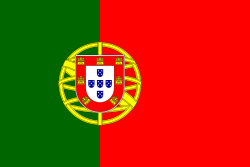 Portugal: Portuguese Air Force
Portugal: Portuguese Air Force
- Acquired 50 U.S.-built F-86Fs, 1958, including some from USAF's 531st Fighter Bomber Squadron, Chambley, Portugal. Also, acquired 15 CL-13Bs Mark 6s, from West Germany, and spares from Norway.
-
- 201 Squadron "Falcões" (Falcons) (formerly designated as 50 Sqn. and later 51 Sqn., before being renamed in 1978), based at Air Base No. 5 (BA5), in Monte Real
- 52 Squadron "Galos" (Roosters), based at Air Base No. 5 (BA5), in Monte Real
 Republic of China (Taiwan): Republic of China Air Force
Republic of China (Taiwan): Republic of China Air Force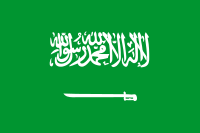 Saudi Arabia: Royal Saudi Air Force
Saudi Arabia: Royal Saudi Air Force
- Acquired 16 U.S.-built F-86Fs in 1958, and 3 Fs from Norway in 1966; and assigned to RSAF No. 7 Squadron at Dharhran.
 South Africa: South African Air Force
South Africa: South African Air Force
- Acquired on loan 22 U.S.-built F-86F-30s during the Korean War and saw action with 2 Squadron SAAF. In October 1956, the SAAF acquired 34 Canadair CL-13Bs Mark 6, which were assigned to 1 Squadron SAAF: 16 were later transferred to the USAF.
 South Korea: Republic of Korea Air Force
South Korea: Republic of Korea Air Force
- Acquired 122 US-built F-86Fs and RF-86Fs, beginning 20 June 1955; and assigned to ROKAF 10th Wing.
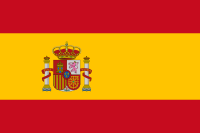 Spain: Spanish Air Force
Spain: Spanish Air Force
- Acquired 270 U.S.-built F-86Fs, 1955-1958; designated C.5s and assigned to 5 wings: Ala de Caza 1, 2, 4, 5, and 6. Retired 1972.
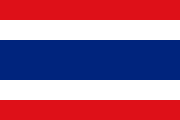 Thailand: Royal Thai Air Force
Thailand: Royal Thai Air Force
- Acquired 40 U.S.-built F-86Fs, 1962, and unknown number of the only exported F-86Ls; and assigned to RTAF Squadrons, No.s 12 (Ls), 13, and 43.
 Tunisia: Tunisian Air Force
Tunisia: Tunisian Air Force
- Acquired 15 used U.S.-built F-86F in 1969.
- Acquired 102 Canadair CL-13 Mark 2s, 1954-1958; and assigned to THK Squadrons, No.s 141, 142 and 143. Also, acquired 12 US-built F-86Fs.
- Acquired three Canadair CL-13 Mark 2s and 428 Mark 4s, 8 December 1952-19 December 1953; assigned to RAF Sabre Squadrons 3, 4, 20, 26, 66, 67, 71, 92, 93, 112, 130, 147 and 234. During 1956-1958, 302 RAF Sabres were overhauled/modified in the UK and returned to the USAF (who had supplied the aircraft under MDAP)) in camouflage colors with RCAF serials and redesignated as F-86E(M); of which 121 were then sent to Yugoslavia and 179 to Italy.

- Further information: List of Sabre and Fury units in US military
 Venezuela: Venezuelan Air Force
Venezuela: Venezuelan Air Force
- Acquired 30 US-built F-86Fs, October 1955 - December 1960; and assigned to one group, Grupo Aerea De Caza No. 12, three other squadrons.
 Yugoslavia: SFR Yugoslav Air Force
Yugoslavia: SFR Yugoslav Air Force
- Acquired 121 modified Canadair CL-13 Mark 4s, 1956, from Britain.
Notable F-86 pilots
- Captain Joseph C. McConnell (16 victories), USAF 51 FIW, who later died in a crash at Edwards Air Force Base testing the F-86H
- Major James Jabara (15 victories), USAF 4 FIW
- Captain Manuel "Pete" Fernandez, (14.5 victories), USAF 4 FIW
- Major George Davis (14 victories), USAF 4 FIW, awarded the Medal of Honor posthumously
- Colonel Royal Baker (13 credits), USAF 4 FIW group commander, 540 combat missions flown in three wars
- Major General Frederick Blesse (10 victories), USAF 4 FIW, noted air tactics author
- Brigadier General James Robinson Risner (eight victories), USAF awarded the Air Force Cross, later Vietnam War POW
- Colonel Francis S. "Gabby" Gabreski (six and one-half victories), USAF 51 FIW commander, top European U.S. ace in World War II
- Captain Iven Kincheloe (five victories) USAF 51 FIW, test pilot selected to fly the X-15
- Colonel Harrison R. Thyng (five victories), USAF 4 FIW commander
- Major John Glenn, a Marine Corps exchange pilot with the USAF 51 FIW
- Colonel Walker "Bud" Mahurin, USAF 51st Fighter Group commander and World War II ace
- Squadron Leader Andy Mackenzie, DFC. RCAF WWII fighter ace (8.5 victories); taken POW when his F-86 was shot down while flying with the USAF 51 FIW in Korea in 1952.[58]
- Captain James Horowitz, USAF 4 FIW, novelist and author of The Hunters under the pen name James Salter
- Flight Lieutenant Lynn Garrison, RCAF demonstration pilot; owner civil registered Canadair F-86 Mk6.
- Squadron Leader Graham Hulse RAF, exchange pilot with the USAF 4 FIW.
Survivors
Many Sabres of several different Marks are preserved around the world, some examples being:
- CA-27 Sabre Mk 30 (A94-922), Czech Air Force Museum, Kbely, near Prague (marked as 'A94-923')
- CA-27 Sabre Mk 32 (A94-982), Wagga Wagga RAAF Museum, Forest Hill, New South Wales, Australia
- CA-27 Sabre Mk 32 (A94-983), Temora Aviation Museum, Temora, New South Wales, Australia[59]
- CL-13 Sabre, Canadian Mk. IV XB812/RCAF 19666 Royal Air Force Museum Cosford
- CL-13 Sabre, Canadian Mk. V Atlantic Canada Aviation Museum, Enfield, Nova Scotia, Canada[60]
- CL-13 Sabre, Canadian Mk. V RCAF Memorial Museum,[61] Trenton, Ontario
- CL-13 Sabre, Canadian Mk.IV (Yugoslav AF serial :11025/ex RCAF 19856; manufacturers number :756) at Yugoslav Aeronautical Museum, Nikola Tesla Airport, Belgrade, Serbia. [62]
- CL-13 Sabre, Canadian Mk.IV (Yugoslav AF serial :11054/ex RCAF 19539; manufacturers number:439) at Yugoslav Aeronautical Museum, Nikola Tesla Airport, Belgrade, Serbia. [63]
- CL-13 Sabre, Canadian Mk.IV (Yugoslav AF serial :11088/ex RCAF 19738; manufacturers number:638) at Yugoslav Aeronautical Museum, Nikola Tesla Airport, Belgrade, Serbia. [64]
- Aeroweb's F-86 Sabrejets on Display at Museums USA locations.
- F-86A Sabre, 48-0242 Midland Air Museum, Coventry, England.[65]
- F-86A Saber, 49-1067 is on display at the National Museum of the United States Air Force in Dayton, Ohio. It was flown to the Museum from the Boeing Company in Seattle, Washington in June 1961. The aircraft is in the markings of the 4th Fighter Group F-86A (S/N 49-1236) flown by Lt. Col. Bruce Hinton on 17 December, 1950, when he became the first F-86 pilot to shoot down a MiG.[66] The Museum also possesses a second F-86A parts plane.
- F-86E Sabre, 50-0600 Pima Air Museum, Tucson, Arizona
- F-86F Sabre, 55-3966 Spanish C.5-82, Torrejón, Spain.[67]
- F-86F Sabre, 52-5307 Spanish C.5-231, Morón, Spain.[67]
- F-86F Sabre, 52-5372 United States, Sembach Annex, Germany.
- F-86F Sabre, Malvinas War Memorial Monument, Lanús, Argentina.[67]
- F-86H Sabre, 53-1525 Pima Air Museum, Tucson, Arizona
- F-86L Sabre, 53-0965 Pima Air Museum, Tucson, Arizona
- F-86 Sabre, Greenup County War Memorial Monument, Greenup, Kentucky, USA (restoration beginning 9/1/08)
Several Sabres are still owned by private owners (most notably actor Michael Dorn[68]), including a handful that still fly at air shows and aviation events. The first privately registered Canadair Sabre was an ex-Golden Hawk MK.VI, registered in 1966 as CF-AMH. It was owned by Milt Harradence and Lynn Garrison.
Specifications (F-86F-40-NA)
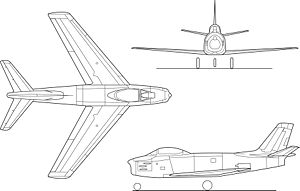
Data from The North American Sabre[69]
General characteristics
- Crew: 1
- Length: 37 ft 1 in (11.4 m)
- Wingspan: 37 ft 0 in (11.3 m)
- Height: 14 ft 1 in (4.5 m)
- Wing area: 313.4 sq ft (29.11 m²)
- Empty weight: 11,125 lb (5,046 kg)
- Loaded weight: 15,198 lb (6,894 kg)
- Max takeoff weight: 18,152 lb (8,234 kg)
- Powerplant: 1× General Electric J47-GE-27 turbojet, 5,910 lbf (maximum thrust at 7.950 rpm for five min) (26.3 kN)
- Fuel provisions Internal fuel load: 437 gallons (1,650 l), Drop tanks: 2 x 200 gallons (756 l) JP-4 fuel
- Basic mission wing loading: 58 lb/sq ft
- Zero-lift drag coefficient: 0.0132
- Drag area: 3.8 sq ft (0.35 m²)
- Aspect ratio: 4.78
Performance
- Maximum speed: 687 mph at sea level at 14,212 lb (6,447 kg) combat weight
also reported 678 mph (1,091 km/h) and 599 at 35,000 feet (11,000 m) at 15,352 pounds (6,960 kg). (597 knots, 1,105 km/h at 6446 m, 1,091 and 964 km/h at 6,960 m.) - Range: 1,525 mi, (1,753 NM, 2,454 km)
- Service ceiling 49,600 ft at combat weight (15,100 m)
- Rate of climb: 8,100 ft/min at sea level (41 m/s)
- Thrust/weight: 0.38
- Stalling speed (power off): 124 mph (108 kt, 200 km/h)
- Landing ground roll: 2,330 ft, (710 m)
- Lift-to-drag ratio: 15.1
- Time to altitude: 5.2 min (clean) to 30,000 ft (9,100 m)
Armament
- Guns: 6× 0.50 in (12.7 mm) M2 Browning machine guns (1,602 rounds in total)
- Rockets: variety of rocket launchers; e.g: 2× Matra rocket pods with 18× SNEB 68 mm rockets each
- Missiles: 2× AIM-9 Sidewinders
- Bombs: 5,300 lb (2,400 kg) of payload on four external hardpoints, bombs are usually mounted on outer two pylons as the inner pairs are wet-plumbed pylons for 2× 200 gallons drop tanks to give the Sabre a useful range. A wide variety of bombs can be carried (max standard loadout being 2 x 1,000 lb bombs plus 2 drop tanks), napalm bomb canisters and can include a tactical nuclear weapon.
See also
- Tactical Air Command
- Semi-Automatic Ground Environment
Related development
- FJ-1 Fury
- F-86D Sabre
- Canadair Sabre
- CAC Sabre
- FJ-2/3/4 Fury
- North American YF-93
- Fuji T-1
- F-100 Super Sabre
Comparable aircraft
- F-9 Cougar
- FMA IAe 33 Pulqui II
- F-84F Thunderstreak
- Dassault Mystère
- Hawker Hunter
- Mikoyan-Gurevich MiG-15
- Mikoyan-Gurevich MiG-17
- Saab 29 Tunnan
Related lists
- List of military aircraft of the United States
- List of fighter aircraft
- List of airshow accidents
References
Notes
- ↑ 1.0 1.1 1.2 Knaack 1978
- ↑ The FJ-1 Fury
- ↑ Aviation History On-line Museum
- ↑ Willy Radinger/Walter Schick, Avantic Verlag ISBN 3-925505-14-8 p.15, german
- ↑ Willy Radinger/Walter Schick, Avantic Verlag; Me 262 Entwicklung und Erprobung des ertsen einsatzfähigen Düsenjäger der Welt, Messerschmitt Stiftung. ISBN 3-925505-21-0, p.32, German
- ↑ North American F-86 Sabre (Day-Fighter A, E and F Models)
- ↑ Aviation History On-line Museum
- ↑ Planes of Perrin, North American F-86L "Dog Sabre"
- ↑ The History of North American Small Gas Turbine Aircraft Engines By Richard A. Leyes, William A. Fleming
- ↑ F-86E Through F-86L
- ↑ North American F-86H Sabre (Fighter-Bomber)
- ↑ Joos 1971, p. 3. Quote: "The Canadair Sabre Mk 6 was the last variant and considered to be the 'best' production Sabre ever built."
- ↑ 13.0 13.1 13.2 13.3 Pakistan Air Force - The Canadair Sabre Goes to War
- ↑ History of the F-86 Sabre Jet on Boeing's website
- ↑ Wagner 1963, p. 17.
- ↑ Aeronautics and Astronautics Chronology, 1945-1949
- ↑ 17.0 17.1 Sabre: The F-86 in Korea
- ↑ 18.0 18.1 Fact Sheet: The United States Air Force in Korea
- ↑ 19.0 19.1 "Bud" Mahurin
- ↑ Lt.Col. George Andrew Davis
- ↑ USAF Organizations in Korea, Fighter-Interceptor 4th Fighter-Interceptor Wing
- ↑ The History of No 2 Squadron, SAAF, in the Korean War
- ↑ Thompson, Warren E. and McLaren, David R. MiG Alley: Sabres Vs. MiGs Over Korea. North Branch, Minnesota: Specialty Press, 2002. ISBN 1-58007-058-2.
- ↑ The war continues
- ↑ Dorr, Robert F., Lake, Jon and Thompson, Warren E. Korean War Aces. London: Osprey Publishing, 2005. ISBN 1-85532-501-2.
- ↑ Russian Claims from the Korean War 1950-53
- ↑ Zhang, Xiaoming. Red Wings over the Yalu: China, the Soviet Union, and the Air War in Korea. College Station, Texas: Texas A&M University Press, 2002. ISBN 1-58544-201-1.
- ↑ Rand. Project Air Force. Air Combat Past, Present and Future. John Stillion, Scott Perdue. August 2008.
- ↑ Stillion, J. and S. Purdue (August, 2008) Air Combat, Past Present and Future. Rand Project Air Force. Retrieved on: September 30, 2008.
- ↑ 323 Death Rattlers
- ↑ Pakistan's Defence Journal
- ↑ 32.0 32.1 32.2 32.3 Claims and Counter Claims- PakDef.Info
- ↑ 33.0 33.1 1965 Losses
- ↑ 34.0 34.1 IAF Kills in 1965
- ↑ Defence Journal: A Hero Fades Away Feb-Mar. 1999
- ↑ Defence Journal: Tail Choppers - Birth of a Legend, December 1998
- ↑ Defence Journal: Devastation of Pathankot, September 2000
- ↑ Devastation of Pathankot
- ↑ Tailchoppers
- ↑ Folland FO-141 Gnat Note: The Pakistan Air Force disputes this claim and accepts the loss of only three F-86 Sabres at the hands of the Gnats.
- ↑ Pakistan Air Force official website
- ↑ Alam’s Speed-shooting Classic
- ↑ Canadair CL-13 Sabre - Royal Canadian Air Force
- ↑ "India and Pakistan: Over the Edge" 13 December 1971, TIME
- ↑ PAF Kills and claims in 1971 - Pakdef.info
- ↑ 46.0 46.1 PAF Losses in 1971Pakdef.info
- ↑ IAF Losses in 1971 - Bharat Rakshak.com
- ↑ Military losses in the 1971 Indo-Pakistani war
- ↑ Bangladesh, The Liberation War
- ↑ Singh et al 2004, p. 30.
- ↑ 51.0 51.1 Aircraft Losses in Pakistan -1971 War
- ↑ Bangladesh Air Force History
- ↑ Virtual Bangladesh:Defense:Airforce
- ↑ North American YF-93A Fact Sheet
- ↑ RAAF Museum page on Sabre
- ↑ Dorr 1993, pp. 65–96.
- ↑ 57.0 57.1 57.2 Baugher's: F-86 Foreign Service
- ↑ S/L ANDY MacKENZIE, RCAF (Ret). Sabre Jet Classics Volume 10 Number 1 Winter 2003
- ↑ RAAF CA-27 Sabre, Temora Aviation Museum
- ↑ Atlantic Canada Aviation Museum: F-86/CL-13 Sabre Mk. V
- ↑ RCAF Museum: CL-13 Sabre Mk. V
- ↑ [1]
- ↑ [2]
- ↑ [3]
- ↑ Midland Air Museum: F-86A Sabre
- ↑ United States Air Force Museum 1975, p. 58.
- ↑ 67.0 67.1 67.2 Dorr 1993, p. 91.
- ↑ Michael Dorn
- ↑ Wagner 1963, p. 145.
Bibliography
- Allward, Maurice. F-86 Sabre. London: Ian Allen, 1978. ISBN 0-71100-860-4.
- Curtis, Duncan. North American F-86 Sabre. Ramsbury, UK: Crowood, 2000. ISBN 1-86126-358-9.
- Dorr, Robert F.F-86 Sabre Jet: History of the Sabre and FJ Fury. St. Paul, Minnesota: Motorbooks International Publishers, 1993. ISBN 0-87938-748-3.
- Joos, Gerhard W. Canadair Sabre Mk 1-6, Commonwealth Sabre Mk 30-32 in RCAF, RAF, RAAF, SAAF, Luftwaffe & Foreign Service. Kent, UK: Osprey Publications Limited, 1971. ISBN 0-85045-024-1.
- Käsmann, Ferdinand C.W. Die schnellsten Jets der Welt: Weltrekord- Flugzeuge (in German). Oberhaching, Germany: Aviatic Verlag-GmbH, 1994. ISBN 3-925505-26-1.
- Knaack, Marcelle Size. Encyclopedia of US Air Force Aircraft and Missile Systems, Volume 1, Post-World War Two Fighters, 1945-1973. Washington, DC: Office of Air Force History, 1978. ISBN 0-912799-59-5.
- Singh, Sarina, et al. Pakistan & the Karakoram Highway. London: Lonely Planet Publications, 2004. ISBN 0-86442-709-3.
- Swanborough, F. Gordon. United States Military Aircraft Since 1909. London: Putnam, 1963. ISBN 0-87474-880-1.
- United States Air Force Museum. Wright-Patterson AFB, Ohio: Air Force Museum Foundation. 1975.
- Wagner, Ray. American Combat Planes - Second Edition. Garden City, New York: Doubleday and Company, 1968. ISBN 0-370-00094-3.
- Wagner, Ray. The North American Sabre. London: Macdonald, 1963. No ISBN.
- Werrell, Kenneth P. Sabres Over MiG Alley. Annapolis, Maryland: Naval Institute Press, 2005. ISBN 1-59114-933-9.
- Westrum, Ron. Sidewinder. Annapolis, Maryland: Naval Institute Press, 1999. ISBN 1-55750-951-4.
External links
- F-86 Sabre Pilots Association
- Globalsecurity.org profile of the F-86 Sabre
- Four part series about the F-86 Sabre – Extended F-86 Sabre article set
- Warbird Alley: F-86 Sabre page – Information about F-86s still flying today
- Sabre site
- F-86 in Joe Baugher's U.S. aircraft site
- Aviation Museums of the World
|
||||||||
|
||||||||||||||
|
||||||||||||||